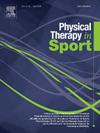Comparison of patient-reported and objective functional measures during the early rehabilitative phase in patients with primary versus revision ACL reconstruction
IF 2.2
3区 医学
Q1 REHABILITATION
引用次数: 0
Abstract
Objectives
Few studies have determined how individuals who undergo a second ACL reconstruction (ACLR) perform in terms of objective and patient-reported outcomes in the early rehabilitation period compared to individuals who undergo primary ACLR. This study investigated the difference in strength and functional outcomes 3–5 months postoperatively in revision ACLR patients compared to primary ACLR patients.
Design
Cross-Sectional Retrospective Chart Review.
Setting
Single university-based orthopaedic practice.
Participants
143 patients who underwent ACLR (121 primary, 22 revision)
Main outcome measures
Isokinetic knee extension and flexion strength at 60°/s and 180°/s, the IKDC, KOOS, and ACL-RSI 4.2 ± 0.7 months after ACLR.
Results
After controlling for age, sex, graft source, and time since surgery, there were no significant group differences for ACL-RSI (p = 0.771), IKDC (p = 0.950), and KOOS subscale scores (p = 0.335–0.740). Similarly, there were no significant group differences in isokinetic knee extension peak torque at 60°/s and 180°/s (p = 0.155, p = 0.147) and knee flexion peak torque 60°/s and 180°/s (p = 0.279, p = 0.325). Group LSIs were comparable for isokinetic knee extension and knee flexion.
Conclusion
Three to five months postoperatively, revision ACLR patients performed similarly in terms of thigh strength, limb symmetry, and patient-reported function compared to primary ACLR patients.
初次ACL重建与改良ACL重建患者早期康复阶段患者报告和客观功能测量的比较
目的:很少有研究确定第二次ACL重建(ACLR)患者在早期康复期的客观表现和患者报告的结果与初次ACLR患者相比。本研究调查了改良ACLR患者与原发性ACLR患者术后3-5个月强度和功能结果的差异。设计横断面回顾性图表回顾。单一的以大学为基础的骨科实习。参与者:143例接受ACLR的患者(121例为原发性,22例为翻修)。主要结果测量:ACLR后4.2±0.7个月的IKDC、KOOS和ACL-RSI(60°/s和180°/s时的膝关节屈伸和屈曲强度。结果在控制年龄、性别、植骨来源、术后时间后,各组间ACL-RSI (p = 0.771)、IKDC (p = 0.950)、oos亚量表评分(p = 0.335 ~ 0.740)差异无统计学意义。同样,60°/s和180°/s的等速膝关节伸展峰值扭矩(p = 0.155, p = 0.147)和60°/s和180°/s的膝关节屈曲峰值扭矩(p = 0.279, p = 0.325)组间无显著差异。lsi组在等速膝关节伸展和膝关节屈曲方面具有可比性。结论:术后3 - 5个月,改良ACLR患者与原发性ACLR患者相比,在大腿力量、肢体对称性和患者报告的功能方面表现相似。
本文章由计算机程序翻译,如有差异,请以英文原文为准。
求助全文
约1分钟内获得全文
求助全文
来源期刊

Physical Therapy in Sport
医学-康复医学
CiteScore
4.50
自引率
8.30%
发文量
125
审稿时长
39 days
期刊介绍:
Physical Therapy in Sport is an international peer-reviewed journal that provides a forum for the publication of research and clinical practice material relevant to the healthcare professions involved in sports and exercise medicine, and rehabilitation. The journal publishes material that is indispensable for day-to-day practice and continuing professional development. Physical Therapy in Sport covers topics dealing with the diagnosis, treatment, and prevention of injuries, as well as more general areas of sports and exercise medicine and related sports science.
The journal publishes original research, case studies, reviews, masterclasses, papers on clinical approaches, and book reviews, as well as occasional reports from conferences. Papers are double-blind peer-reviewed by our international advisory board and other international experts, and submissions from a broad range of disciplines are actively encouraged.
 求助内容:
求助内容: 应助结果提醒方式:
应助结果提醒方式:


